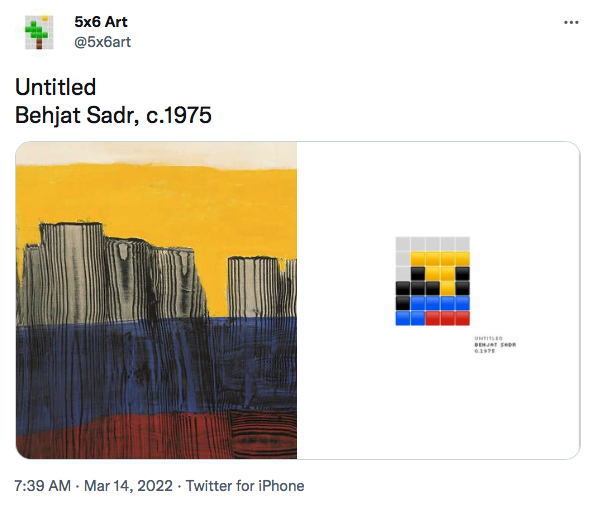TITLE: A Cool Project For Manipulating Images, Modulo Wordle
AUTHOR: Eugene Wallingford
DATE: March 16, 2022 2:52 PM
DESC:
-----
BODY:
Wordle has been the popular game du jour for a while now.
Whenever this sort of thing happens, CS profs think, "How can I
turn this into an assignment?" I've seen a lot of discussion of
ways to create a Wordle knock-off assignment for CS 1.
None of this conversation has interested me much. First, I rarely
teach CS 1 these days, and a game such as Wordle doesn't fit into
the courses I do teach right now. Second, there's a certain
element of Yogi Berra wisdom driving me away from Wordle: "It's
so popular; no one goes there any more."
Most important, I had my students implementing Mastermind in my OO
course back in the 2000-2005 era. I've already had most of the fun
I can have with this game as an assignment. And it was a popular
one with students, though challenging. The model of the game
itself presents challenges for representation and algorithm, and
the UI has the sort of graphic panache that tends to engage students.
I remember receiving email from a student who had transferred to
another university, asking me if I would still help her debug and
improve her code for the assignment; she wanted to show it to her
family. (Of course I helped!)
However I did see something recently that made me think of a cool
assignment:
5x6 Art,
a Twitter account that converts paintings and other images into
minimalist 5 block-by-6 block abstract grids. The connection to
Wordle is in the grid, but the color palette is much richer.
Like any good CS prof, I immediately asked myself, "How can I
turn this into an assignment?"
 I taught our intro course using the media computation approach
popularized by Mark Guzdial
back in 2006.
In that course, my students processed images such as the artwork
displayed above. They would have enjoyed this challenge! There
are so many cool ways to think about creating a 5x6 abstraction
of an input image. We could define a fixed palette of n
colors, then map the corresponding region of the image onto a
single block. But how to choose the color?
We could compute the average pixel value of the range and then
choose the color in the palette closest to that value. Or we
could create neighborhoods of different sizes around all of the
palette colors so that we favor some colors for the grid over
others. What if we simply compute the average pixel for the
region and use that as the grid color? That would give us a
much larger but much less distinct set of possible colors. I
suspect that this would produce less striking outputs, but I'd
really like to try the experiment and see the grids it produces.
What if we allowed ourselves a bigger grid, for more granularity
in our output images? There are probably many other dimensions
we could play with. The more artistically inclined among you
can surely think of interesting twists I haven't found yet.
That's some media computation goodness. I may assign myself to
teach intro again sometime soon just so that I can develop and
use this assignment. Or stop doing other work for a day or two
and try it out on my own right now.
-----
I taught our intro course using the media computation approach
popularized by Mark Guzdial
back in 2006.
In that course, my students processed images such as the artwork
displayed above. They would have enjoyed this challenge! There
are so many cool ways to think about creating a 5x6 abstraction
of an input image. We could define a fixed palette of n
colors, then map the corresponding region of the image onto a
single block. But how to choose the color?
We could compute the average pixel value of the range and then
choose the color in the palette closest to that value. Or we
could create neighborhoods of different sizes around all of the
palette colors so that we favor some colors for the grid over
others. What if we simply compute the average pixel for the
region and use that as the grid color? That would give us a
much larger but much less distinct set of possible colors. I
suspect that this would produce less striking outputs, but I'd
really like to try the experiment and see the grids it produces.
What if we allowed ourselves a bigger grid, for more granularity
in our output images? There are probably many other dimensions
we could play with. The more artistically inclined among you
can surely think of interesting twists I haven't found yet.
That's some media computation goodness. I may assign myself to
teach intro again sometime soon just so that I can develop and
use this assignment. Or stop doing other work for a day or two
and try it out on my own right now.
-----

